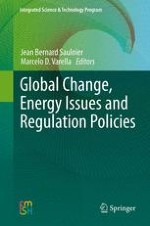2013 | OriginalPaper | Chapter
6. CO2 Capture Transport and Storage, a Promising Technology for Limiting Climate Change
Author : Christian Fouillac
Published in: Global Change, Energy Issues and Regulation Policies
Publisher: Springer Netherlands
Activate our intelligent search to find suitable subject content or patents.
Select sections of text to find matching patents with Artificial Intelligence. powered by
Select sections of text to find additional relevant content using AI-assisted search. powered by
